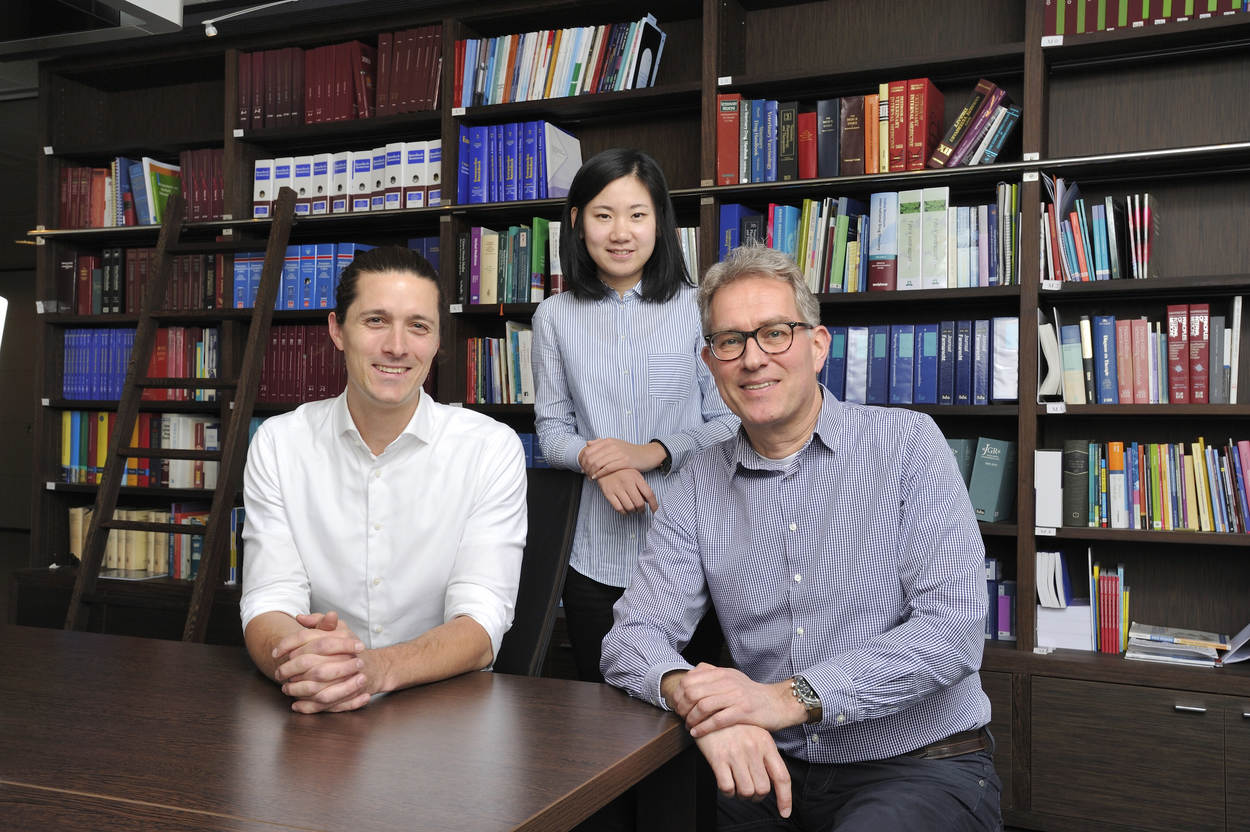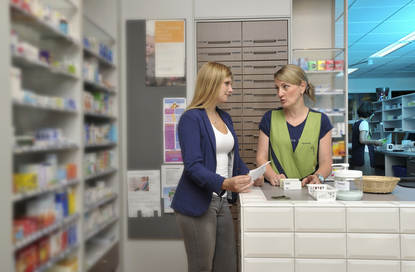We still have a lot to discover about the use of generic medicines. A generic medicine is comparable to an earlier authorised medicine (the reference medicine or innovator product) of which the patent protection period has expired. Marc Maliepaard, Abby Yu and Pieter Glerum, pharmacokinetic assessors, are looking into possible reasons of reported problems when switching between branded medicines and generic medicines. Step by step, they are ruling out possible causes of complaints.
We started by posing the question: can you switch from one generic medicine to another?
To do this, they use data from practice and from the MEB's dossiers. "This is a gold mine. We can use this to answer questions. It is good that we are given the time to do this next to our regular work. In this way we can contribute to solving problems in the field. We are carefully investigating all the options. We have not yet found a major cause, we are searching on," explains Maliepaard, senior assessor and the copromotor of Yu and Glerum.
For over 10 years, Maliepaard has been involved in generic medicines and the complaints about them. One thing that strikes him is that from the start, prescribers and doctors are hesitant to use generic medicines. They look at it as an obligatory step to take, because generic medicines are less expensive and it use is being promoted by the Dutch preference policy.
"The MEB's stance is that branded medicines and generic medicines are interchangeable. We started by posing the question: can you switch from one generic medicine to another? We investigated this using existing studies, together with the data from our archives." For her PhD, pharmacokinetics assessor Abby Yu compared a variety of medicines, looking at the effect at a population level of switching between generic medicines and branded medicines, and between different generic medicines. She undertook a bio-equivalence study, the substantial equivalence of subtances in a patient's blood. This research showed there is no difference in generic medicines amongst eachother nor between generic medicines and branded medicines.
More focus
The researchers are increasingly zooming in on the question; because why do patients report complaints when switching in spite of the fact that their blood contains comparable concentrations of the active substance. “In addition, after the MEB approves of a medicine, the manufacturer can modify the medicine. For example, by using a different supplier for the active pharmaceutical ingredients or by changing the size of the batch,” Yu explains. She obtained her PhD in May 2017 and is now a full-time pharmacokinetic assessor. But this topic continues to interest her. She is currently looking into other problems with generics. Sometimes, the original medicine, the innovator, is no longer available in Europe, so there is no longer a medicine to compare it with. What can the MEB do in this case? Because then there is no medicine with which you can compare it when you submit a generic application.
“The main essence of the research work is Regulatory Science, scientifically substantiating what we are doing within the MEB. Abby's PhD project worked as a driver. Partly because of this, we were able to publish the brochure ‘Answers to questions about generic medicines’ for patients. The MEB is transparent about this; generic medicines are interchangeable. And in the background, we are working very hard on continuing to test the robustness of this statement,” explains Peter Glerum, pharmacokinetic assessor who also started his PhD research project in 2014. The scientists agree that the confidence doctors and pharmacists place in generic medicines and the way they communicate about this to their patients is crucial.
Simulating patient groups
The emphasis often lies on the negative experiences when switching, Glerum states. “However, one should also emphasise that it often works out very well.” In the meantime, he is examining this more closely. The bioequivalent has been determined for a group; however, it could be the case that there are individuals in that group for whom the switch does not go well. Glerum is examining whether it is possible to predict which patients have a slightly higher probability that the switch will not go well. Glerum used modelling and simulation for this and worked together with the University of Southern California in Los Angeles (USA). They are pioneers in the non-parametric approach. “You can identify a subgroup with their software without specifying beforehand which subgroup you are looking for. We can simulate various patient groups in order to see whether there are patients with deviating blood levels, thus where there is no bioequivalence. Is it possible to identify characteristics of a patient that can predict a higher probability of deviating blood levels? And how can we apply this in practice?”
“One should also emphasise that it often works out very well.”
Multidisciplinary issue
Yu argues that the problems with regard to generic medicines are actually a multidisciplinary issue. “It is not only about the technical side of the development of medicines, but also about the psyche of people. If a medicine looks different, this might already have an effect on someone's health.
It is the MEB's task to authorise good quality medicines and to ensure that there is sufficient scientific input that prescribers can rely on.”
In the meantime, Glerum has started a second project. In cooperation with the Dutch National Healthcare Institute and the Netherlands Pharmacovigilance Centre Lareb, he can combine reports of adverse effects with the actual number of user who have switched from branded medicines to generic medicines. In this manner, it becomes clear how often a specific medicine has been prescribed and switched in a period and whether this led to peaks in the number of complaints. More clarity can be obtained by combining this information. One of the objectives of this research project is to start using this information in such a way the MEB can communicate actively with prescribers and patients in the event of a switch.

Feedback about the generic medicines brochure
- “Nice brochure. Clear, colourful images are good and understandable for the patient.” Lonneke Grijseels, pharmacist, Schelde Apotheek, Amsterdam
- “We often send the brochure to patients who are switching to a generic medicine. That works well.” – Martha Wagenaar, physician assistant, VU Medical Centre, Department Lung diseases
- “The brochure is easy to understand for me as a consumer.” – Wieke Polman, consumer
- “Good brochure, in addition to the indispensable oral explanation of course.” – Anneke Jansen Molenaar, Eye Association
- “Informative, clear, understandable. Patients like to take the brochures with them at our meetings.” G. Willemsen, Rheumatic Care Netherlands










